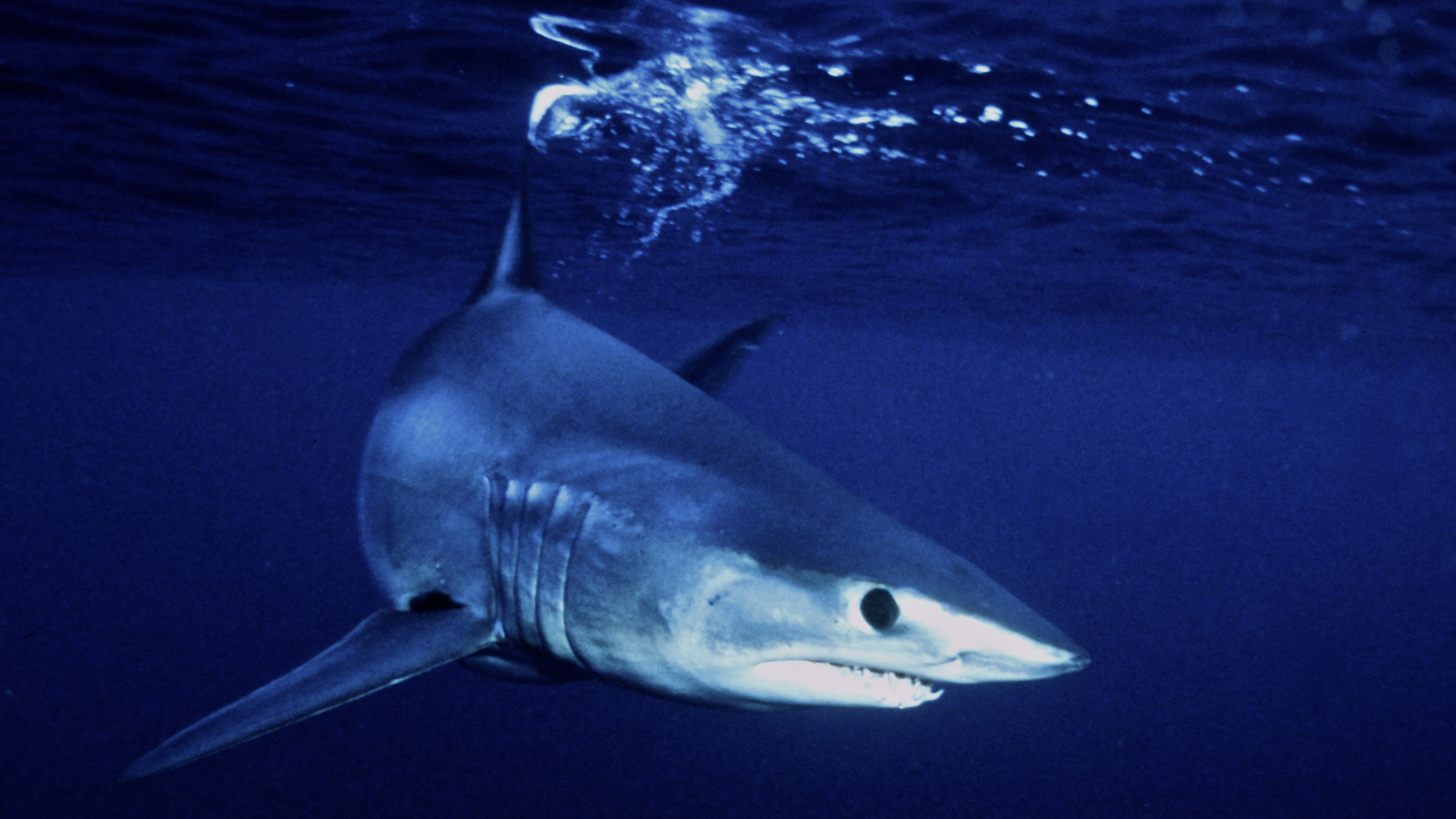

While the mighty megalodon (Otodus megalodon) went extinct about 3.6 million years ago, its grip on popular culture remains strong. However, the ‘meg’ may not have been as wide as scientists previously believed. A study published January 21 in the journal Palaeontologia Electronica proposes that the megalodon was likely more slender than other studies previously suggested. However, the revised anatomical theory for the underwater legend does not compromise its apex predator status.
[Related: Megalodons were likely warm-blooded, despite being stone-cold killers.]
The megalodon swam in the Earth’s oceans over 23 million years ago. While paleontologists have found many fossilized teeth, their bodies were mainly built from cartilage instead of bones. Cartilage is rarely preserved in the fossil record, making a full skeleton difficult if impossible to find. This has made the apex predator’s true size a decades-long paleontological mystery.
The new study is based on an incomplete set of fossil vertebrae at the Royal Belgian Institute of Natural Sciences in Brussels, Belgium. Previous research estimated that this specific megalodon would have been 30.2 feet long and that some megalodons could grow to 50 to 65 feet long and could snack on animals as large as orca whales.
Paleontologists have historically used modern great white sharks as a stand-in model for reconstructing megalodon bodies. A 2022 study reconstructing the megalodon based on the same skeleton in Belgium proposed that the ancient shark relative was potentially a stocky and powerful fish that was built for bursts of speed similar to the modern great white shark. However, the new study casts doubts on its size estimate.
A team of 26 scientists from institutions around the world reexamined the megalodon vertebrae and compared them to living sharks. They now believe that the strength of the spinal column suggests that the megalodon would have had a more slender body shape than the great white great white. A shark as long as the megalodon would have been overly cumbersome if it had the more bulky shape of great white.

“Our team reexamined the fossil record, and discovered the Megalodon was more slender and possibly even longer than we thought. Therefore, a better model might be the modern mako shark,” study co-author and University of California, Riverside biologist Phillip Sternes said in a statement. “It still would have been a formidable predator at the top of the ancient marine food chain, but it would have behaved differently based on this new understanding of its body.”
Swansea University paleontologist Jack Cooper, a co-author of the 2022 study that this new paper casts some doubt on, stands by this team’s original research. PopSci covered that study in August 2022.
“While alternative hypotheses should be and are welcomed in science, the proposal of this paper that megalodon may have been skinnier than previously suggested suffers from a circular logic. Its basis comes from a criticism of our work in using the great white shark as an ecological analogue to megalodon, which it argues we should not have done,” Cooper told PopSci. “However, not only does that criticism ignore that we account for multiple analogues (great white, shortfin mako, longfin mako, salmon shark, and porbeagle shark) when adjusting the model, but the ‘elongated body’ interpretation entirely originates from a comparison to a great white shark. Their results are not surprising though, in our 2020 paper, we tested an alternative model using only the great white shark and it indeed resulted in a slenderer model (a megalodon with an elongated body). Importantly, the ‘elongated body’ interpretation is based on a single observation, a comparison with a single analogue, and lacks statistical tests. More critically, several aspects of the study are impossible for future researchers to verify or replicate as the authors do not provide the raw data.”
Discoveries happen by testing and retesting older hypotheses based on new data or findings, so refuting old evidence does not make an old study incorrect. It typically builds upon it. Since finding a complete megalodon skeleton may be impossible, this debate will likely continue. Sci-fi fans and scientists alike will have gaps to fill in the megalodon’s story and its life stalking ancient seas.
[Related: This whale fossil could reveal evidence of a 15-million-year-old megalodon attack.]
A different understanding of the megalodon’s body type could help inform how these giant extinct sharks impact the evolution and ecology of the ecosystems that shaped the present-day oceans. The team behind this most recent study believes that it may have had a longer digestive canal, which would have enhanced their absorption of nutrients, so they would not have to eat quite as often as previously believed.
“With increased ability to digest its food, it could have gone for longer without needing to hunt. This means less predation pressure on other marine creatures,” Sternes said. “If I only have to eat one whale every so often, whale populations would remain more stable over time.”
Some shark scientists have theorized that a natural decrease in prey coinciding with the emergence of the great white shark led to the extinction of megalodon. Others proposed that the same warm-blooded biology that likely fueled their massive size made them particularly sensitive to environmental changes.
“Despite the major scientific advancement in our new study, the fact that we still don’t know exactly how O. megalodon looked keeps our imagination going,” study co-author and DePaul University paleobiologist Kenshu Shimada said in a statement. “The continued mystery like this makes paleontology, the study of prehistoric life, a fascinating and exciting scientific field.”
Update 01/22/24 3:36PM: This article has been updated in one instance to clarify that the new study proposes that the megalodon was “not as wide” as scientists originally believed instead of “not as large.”
